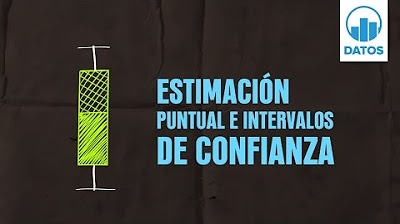Descriptive Statistics, Part 1
Summary
TLDREn este tutorial, Amanda Rockson Appq introduce conceptos clave de las estadísticas descriptivas, como la distribución, las medidas de tendencia central (media, mediana y moda) y la dispersión (rango, varianza y desviación estándar). Utiliza ejemplos para ilustrar cómo calcular estas medidas y cuándo es apropiado reportar cada una, destacando la importancia de la variación en los datos. También explica cómo usar SPSS para generar estadísticas descriptivas y cómo reportarlas en formato APA, proporcionando tanto descripciones narrativas como ejemplos de tablas formateadas.
Takeaways
- 📊 Una distribución es una lista de puntajes tomados en una variable particular y es fundamental en estadísticas.
- 🔢 Los tres medidores de tendencia central son la media, la mediana y la moda.
- 💡 La media es el promedio aritmético de un grupo de puntajes, o la suma de puntajes dividida por el número de puntajes.
- 📈 La mediana es el punto central de todos los puntajes en una distribución ordenada de menor a mayor.
- 📦 La moda es el valor con la mayor frecuencia en la distribución.
- 📑 El tipo de datos y la distribución de los datos determinan qué medida de tendencia central se informará.
- 🔄 La variación ocurre en cada distribución y es causada por diferentes variables.
- 📋 La importancia de la variación se entiende mejor cuando se conoce cómo se dispersan los datos y cómo varían.
- 📏 La dispersión se mide por el rango, la varianza y la desviación estándar.
- 📘 La varianza es la media de las diferencias al cuadrado de la media y es fundamental para la desviación estándar.
- 📊 La desviación estándar es una medida común de dispersión y es simplemente la raíz cuadrada de la varianza.
- 📐 La desviación estándar muestra cómo se dispersan los puntajes alrededor de la media, y un valor más grande indica una mayor dispersión.
Q & A
¿Qué es una distribución en estadística?
-Una distribución es una lista de puntuaciones obtenidas en una variable específica. Es fundamental para el análisis estadístico, ya que permite identificar patrones y realizar cálculos, como la tendencia central y la dispersión.
¿Cuáles son las tres medidas de tendencia central?
-Las tres medidas de tendencia central son la media, la mediana y la moda. La media es el promedio, la mediana es el valor central en una lista ordenada, y la moda es el valor que aparece con mayor frecuencia.
¿Cómo se calcula la media?
-La media se calcula sumando todas las puntuaciones y dividiendo esa suma por el número total de puntuaciones. Por ejemplo, si las puntuaciones son 69, 77, 84, 85, 87, 92 y 98, la media sería 83.1.
¿Qué indica la mediana en un conjunto de datos?
-La mediana es el punto medio de un conjunto de datos ordenados de mayor a menor. Si el número de datos es impar, es el valor central; si es par, es el promedio de los dos valores centrales.
¿Qué es la moda y cómo se identifica?
-La moda es el valor que aparece con mayor frecuencia en una distribución. En el ejemplo del guion, 77 es la moda porque aparece tres veces en el conjunto de datos.
¿Cuándo se utiliza la media, la mediana o la moda?
-La media se usa con datos de nivel de intervalo o de razón, la mediana con datos ordinales, y la moda con datos categóricos. Sin embargo, en casos de valores atípicos o distribuciones sesgadas, la mediana puede ser más representativa que la media.
¿Qué es la variación en una distribución?
-La variación es el grado de diferencia entre las puntuaciones de una distribución. Puede deberse a diferentes factores, como la experiencia previa de los estudiantes o sus hábitos de estudio.
¿Qué es la varianza y cómo se calcula?
-La varianza es el promedio de las diferencias al cuadrado respecto a la media. Se calcula restando la media de cada puntuación, elevando al cuadrado esa diferencia, y luego promediando los resultados.
¿Qué es la desviación estándar?
-La desviación estándar es la raíz cuadrada de la varianza. Mide qué tan dispersas están las puntuaciones alrededor de la media. Un valor alto indica mayor dispersión y un valor bajo indica menor dispersión.
¿Cómo se interpretan los resultados de una distribución normal en términos de desviación estándar?
-En una distribución normal, aproximadamente el 68% de las puntuaciones caen dentro de una desviación estándar de la media, el 95% dentro de dos desviaciones estándar y el 99.7% dentro de tres desviaciones estándar.
Outlines

This section is available to paid users only. Please upgrade to access this part.
Upgrade NowMindmap

This section is available to paid users only. Please upgrade to access this part.
Upgrade NowKeywords

This section is available to paid users only. Please upgrade to access this part.
Upgrade NowHighlights

This section is available to paid users only. Please upgrade to access this part.
Upgrade NowTranscripts

This section is available to paid users only. Please upgrade to access this part.
Upgrade NowBrowse More Related Video

Medidas Descriptivas Ejemplo

Medidas de Dispersión o Variabilidad - Introducción

Medidas de dispersión datos no agrupados en tabla de frecuencia (paso a paso)

10. Estimación puntual e intervalos de confianza | DATOS 2.0 MINI

3º Secundaria | Matemáticas | Medidas de tendencia central y de dispersión

Estadística Descriptiva: Medidas de Síntesis (I). Módulo 2
5.0 / 5 (0 votes)
